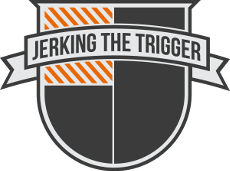I’m an old curmudgeon who has only just become serious about the pistol red dot sight journey. I have early experience with the concept going back to the ALG 6 Second Mount, but until recently, I haven’t owned a pistol red dot sight on a handgun that I would actually carry. I am fortunate that I have been able to try many red dot sights over the years. With my limited experience, I was already familiar with the concepts of using them and the issues that must be trained around.
I wish I could say that I sought out a Holosun 507 Comp because of my sage wisdom, but it basically came to me as a trade. Now, with the benefit of some range sessions and my previous experience, I can see that I basically lucked into a nearly ideal optic to start with because it has ways of holding your hand through all of the training issues I mentioned above… and that I will get into now.

Finding the Dot
I would venture a guess that being able to consistently find the dot during the draw stroke is the top concern and number one training priority for most new pistol RDS shooters. The 507 Comp eases this training process in a few ways. The larger window is more forgiving than most smaller RDS, allowing more wiggle room so to speak. It also offers an array of reticle options, including a 32 MOA ring. This, coupled with the large window, makes it more likely that some portion of the reticle will be visible at the end of your draw stroke, especially if you have trained your draw stroke before.
Tracking the Dot
It seems a lot of shooters don’t think much beyond finding the dot, but it should also be a goal of any pistol RDS shooter to be able to track the dot through recoil. Of course, your ability to track the dot will also be impacted by the extent to which your skill provides a consistent recoil impulse, but it is also true that a larger window and a larger dot option are desirable for tracking. Many new RDS shooters immediately want the smallest possible dot because of the allure of enhancing accuracy at distance. However, check the reticles of experienced dot shooters, especially those in pursuits that put a premium on speed with acceptable accuracy, and you are likely to find larger dot/reticle sizes in the 6-8 MOA range. The 507 Comp covers all of these scenarios with its reticle options.

Target Focus
If you want to be better with a dot, finding and tracking the dot is fine, but what you really need to do is get out of the habit of staring at your sights. The main advantage and where you will start to find real speed with a dot sight is when you shift to target focus. This is easy to say and hard to do. Even experienced competitive shooters are constantly trying to improve here. In my experience, I feel I will always be fighting this focus battle to some extent, but the 507 Comp’s large window does help. We are trying to look through the window, not at it, so it makes sense that a larger window is easier to look through. A lot of my previous experience was with a T1 on an ALG 6 Second Mount, and the difference here is night and day. It is much easier to look through the 507 Comp at arm’s length.
Price
Those who are dipping their toes into pistol-mounted RDS sights may not want to break the bank. I think it is pretty wise and natural to want to ease into something like this to see if you can get on board with the concept. The 507 Comp is at the affordable end of the spectrum while still being a premium, known-good sight. It is also desirable, so if you decide it isn’t for you, you can pretty easily recoup some of your initial cost.
Downsides
Unfortunately, the large window that is central to many of the advantages I listed above is also this sight’s biggest downside. It is bigger than most pistol RDS options on the market but practically, it isn’t actually that much bigger. It still fits the same slide cuts, so it isn’t too dimensionally dissimilar to smaller red dot sights. I also have yet to see an optics cut holster that it didn’t fit (not that I have tried them all). Finally, with a few weeks of carry, I don’t really find it to be harder, though admittedly, a corner will stick out just a bit more if your holster is designed to really wedge the grip of the handgun in toward your body.
Wrap Up
I feel pretty fortunate to have landed on this optic at the beginning of taking the pistol-mounted RDS seriously. It is a friendly place to start, and I don’t see any reason I would ever outgrow it. I had just enough experience with various other optics to understand that this is a great place to start. So, if you are just starting out, consider the Holosun 507 Comp.
Check out the Holosun 507 Comp at Amazon.com (this is an affiliate link, using it helps JTT with a small commission with no additional cost to you).
















